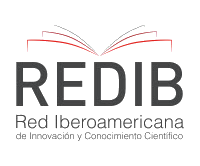Characterization of mathematical thinking
##plugins.themes.bootstrap3.article.main##
This research is experimental, and qualitative analysis has its origin in the question posed by Wittenberg (1963): What is the mathematical thinking? Its main objective is to characterize mathematical thinking through feedback of empirical observation carried out with elementary students, second graders and undergraduate students from the region of Baviera, Germany. In this process surveys were implemented for a sample of students from the University of Augsburg, which were analyzed with the CHIC program and in other cases, worked with free forms of expression such as mathematical journals and essays, these were analyzed qualitatively using social hermeneutics. As a result a characterization of mathematical thinking was obtained, which considers five dimensions, four of them are: the dimension of perception, strategies and procedures, related to the content and not rational thinking capabilities. A fifth dimension is given by the thinking styles and media, including representations, basic notions and conceptual metaphors.
Downloads
##plugins.themes.bootstrap3.article.details##
Anderson, B. (1981). The C omplete Thinker. A Handbook of Techniques for Creative and Critical Problem Solving. New Jersey: Prentice- Hall.
Asanger, R. y Wenninger, G. (1999). Handworterbuch Psychologie. Weinheim: BELTZ Psychologie Verlags Union.
Biehler, R., Scholz, R. W., StraKer, B. y Winkelmann, B. (1994). Didactics of Mathematics as a Scientific Discipline. Dordrecht: Kluwer Academics Publishers.
Borromeo Ferri, R. (2004). Mathematische Denkstile. Ergebnisse einer empirischen Studie. Hildesheim: Franzbecker.
Bortz, J. y Doring, N. (2006). Forschungsmethoden und Evaluation: für Human und Sozialwissenschaftler. Tercera edición, Berlín: Springer.
Brunstig-Müller, M. (1997): Wie Kinder denken oderdenken, sie denken. Ein metakognitiver Interventionsansatz. Edition SZH/SPC (der Schweizerischen Zentralstelle für Heilpadagogik Luzern). Biel: Druckerei Schüler AG.
Damerow, P. (1996). Abstraction and Representation. Essay on the Cultural Evolution o f Thinking. Dordrecht: Kluwer Academic Publisher.
Davis, Philip J. y Hersh, Reuben. 1981. The Mathematial Experience. Boston: Birkhauser.
English, L. D. (1997): Mathematical reasoning: Analogies, metaphors, and images. London: Lawrence Erlbaum Associates.
Freudenthal, H. (1979): Mathematik als padagogische Aufgabe. Vol. I. Y II. Stuttgart: Klett Studienbücher.
Funke, J. (2006): Enzyklopadie der Psychologie. Serie II Kognition, Vol. 8, Denken und Problemlosen. Gottingen: Hogrefe.
Gras, R. (2005): Panorama du développement de l'A.S.I. a partir de situations fondatrices. Troisiemes Rencontres Internationales, Palermo, Italia. Extraído en febrero del 2010 de la página web: http://math.unipa.it/~grim/asi/asi_05_gras_1.pdf.
Hofe, vom R. (1995): Grundvorstellungen mathematischer Inhalte. Heidelberg: Spektrum.
Lakoff, G., y Núñez, R. (2000). Where Mathematics comes from? New York: Basic Books.
Margulies, N. (2000): Cartografía de nuestro espacio interno. Caracas: Ediciones cartografía mental computarizada.
Reyes-Santander, Pamela. (2012). Charakterisierung des mathematischen Denkens - Szenarien m it Gymnasiasten und Studenten unter Verwendung von Themen der Gruppentheorie. Tesis de Doctorado, facultad de ciencias y matemática, Universidad de Augsburgo, Alemania.
Schoenfeld, A. (1994). Mathematical thinking and problem solving. Studies in Mathematical Thinking and Learning. Hillsdale:Lawrence Erlbaum Associates.
Schwank, I. (2003). Einführung in funktionales und pradikatives Denken. En I. Schwank, ZDM-Themenheft 'Zur Kognitiven Mathematik', p. 70-78.
Sfard, A. (1991). On the dual nature o f mathematical conceptions: reflections on process and objects as different sides of the same coin. Educational Studies in Mathematics 22 (3), p. 1-36.
Sfard, A. (1994). Reification as the Birth of Metaphor. For the learning of mathematics. (14,1), p. 44-55.
Soto-Andrade, J. (2006). Un monde dans un grain de sable: Métaphores et analogies dans l'apprentissage des maths. Ann. Didactique Sciences Cogn. p. 11, 123- 147.
Tall, D. (1991). The Psychology of Advanced Mathematical Thinking, in Tall D. O. (ed.) Advanced Mathematical Thinking, Kluwer: Holland, p. 3- 21.
Varela, F. (1997). Erkenntnis und Leben. En F. B. Simon, Lebende Systeme. Wirklichkeitskonstruktionen in der Systemischen Therapie. Frankfurt am main: Suhrkamp. p. 52-48.
Wittenberg, A. (1963): Bildung und Mathematik Stuttgart: Klett Verlag.














